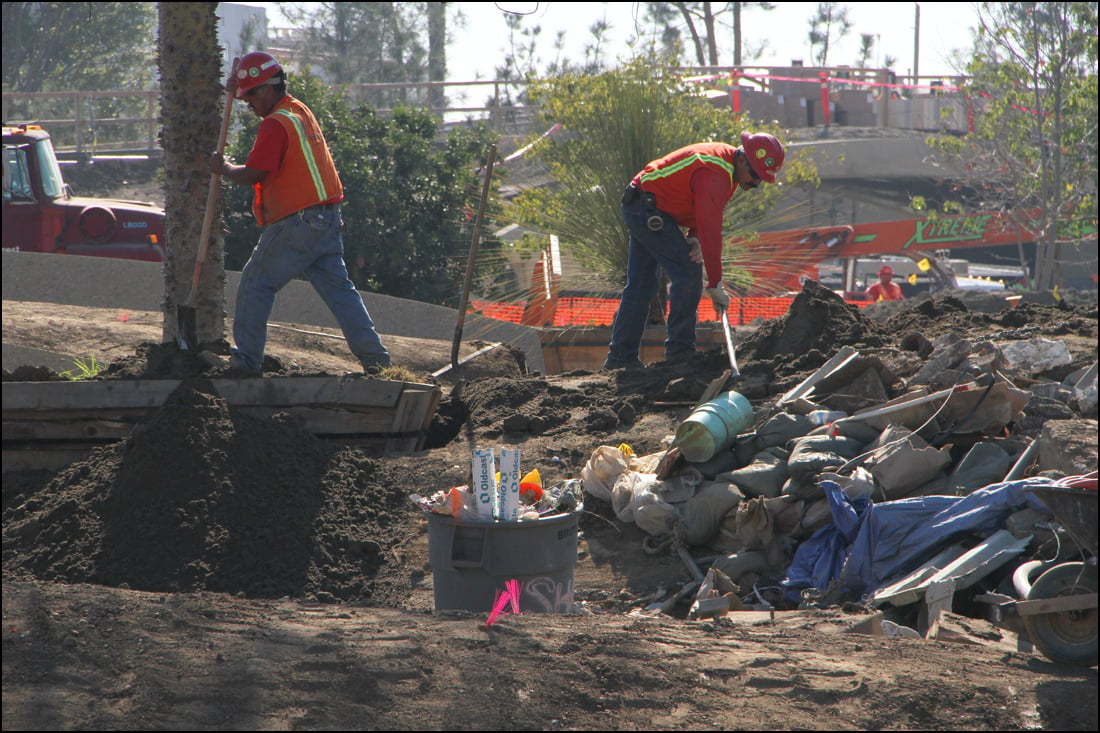
CITY HALL— On Feb. 12, the Santa Monica City Council voted 4 to 1, with Councilmember Bob Holbrook against, to name the city's newest park after the Native American people who inhabited the land before the arrival of Spanish settlers.
Unfortunately, there seems to be little consensus on who that is.
The $47 million park across from City Hall that will overlook the Pacific Ocean has been named Tongva Park at the urging of a dedicated group who both flocked to a City Council meeting and the online poll set up to capture residents' opinions.
The poll was inconclusive, with most choosing "Other" and writing in names that ranged from Civic Center Park to New Bum Park. While city officials lobbied for Palisades Garden Walk, which had served as the working title for the past two years, council members chose to go with the name "Tongva," which won 128 votes in the online poll.
That doesn't sit well with Tim Poyorena-Miguel.
"It turns my stomach," he said.
The former studio makeup artist turned media relations pro is a member of the Kizh Nation, a band of Indians who hold that the Tongva name is a historical mistake perpetuated by a group of people with money on the mind.
Two representatives of the Kizh spoke at the City Council meeting, asking that the council forgo naming the park after a people who never truly existed.
"Better to name it something neutral than something offensive," said Gary Stickel, who spoke at the Feb. 12 meeting.
Stickel is an archaeologist trained at UCLA and acts as head archaeologist for the Gabrieleño Band of Mission Indians, who call themselves the Kizh. (On a side note, he also was a consultant on the Indiana Jones movies starring Harrison Ford as everyone's favorite science-driven adventurer.)
Stickel's research points to the Kizh as residents of the Whittier Narrows, roughly 20 miles from Santa Monica. The name translates to "house," and describes the dwellings made of willow trees that this band of Native Americans used.
He believes the word "tongva" referred to a rock on which seeds were ground, a reference found in a microfiche copy of notes taken by John Peabody Harrington, a gentleman who was fascinated by the local tribes and strove to study them.
Stickel holds that it was never used to refer to a group of people until the early 20th century when it was brought forward by a Gabrieleño woman named Mrs. James V. Rosemeyer in 1905.
Others snagged the name and popularized it in the 1990s for their own purposes, he said.
"Kizh is the closest thing that they had to a tribal name," Stickel said.
At least three groups have embraced the Tongva title, each with markedly similar names: The Gabrielino-Tongva Tribe, the Gabrieliño/Tongva Nation Tribal Council and the Gabrieleño/Tongva Tribal Council of San Gabriel.
Desireé Martinez chooses not to affiliate with any of the above, but still considers the Tongva name a legitimate one, and the City Council's decision to incorporate it in the park name a win for the community.
Martinez, also a trained archaeologist, characterizes the dispute as a family squabble. Interestingly, both she and Stickel point to a line in William McCawley's book "The First Angelinos" that questions whether or not the Gabrieleños ever had a general name for themselves to prove their overarching point about naming conventions.
However, where Stickel uses the ambiguity to assert the inappropriateness of the name "tongva," Martinez believes it highlights the need for a native name that can apply to the remaining Native Americans to replace Gabrieleño. That moniker was derived from the name of the Spanish mission that the native peoples were enslaved to build.
Martinez doesn't dispute that Kizh was a name used by one group of people, she's just not sold on the idea that it applied to more than one village.
"Each community has a right to call themselves what they want," she said. "(Kizh) is not a term history has proven used for the whole community."
Whatever history bears out to be the appropriate term, there is much power in a name, particularly when it comes to the benefits won by federal recognition of a tribe. Neither Kizh, Tongva nor any spelling of Gabrieleño are currently recognized by the Bureau of Indian Affairs, although several groups, including the Kizh, are working on applications.
Two letters of intent from two separate Tongva groups remain on the rolls at the Bureau of Indian Affairs from 1994 and 1997.
Santa Monica has now entered the fray with a City Council vote and $100,000 worth of signage planned for the new park, and it doesn't look likely to back out any time soon.
To reconsider the park name, one of the four council members who voted for it — Gleam Davis, Kevin McKeown, Tony Vazquez or Ted Winterer — would have to put it on the agenda for reconsideration.
For his part, Holbrook doubts that will happen. He was always opposed to the name, thinking that it ought to reflect the fact that the park is located in the middle of Santa Monica.
He has more dire predictions for the fate of the Tongva name.
"As time goes by, I think the park will be called the Tonka Park, because people will confuse the name with the Tonka Toy company."
ashley@www.smdp.com









